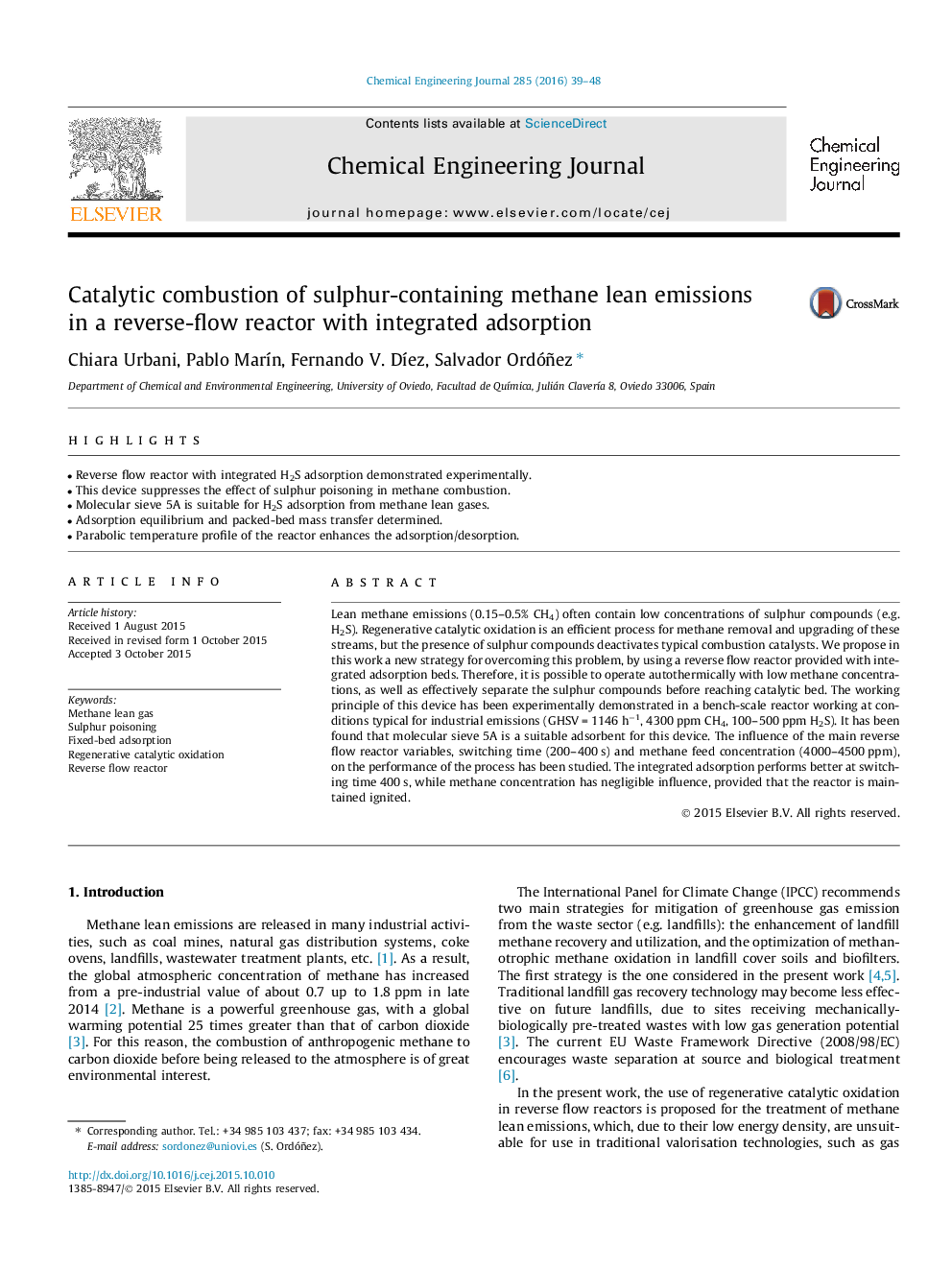| Article ID | Journal | Published Year | Pages | File Type |
|---|---|---|---|---|
| 6583261 | Chemical Engineering Journal | 2016 | 10 Pages |
Abstract
Lean methane emissions (0.15-0.5% CH4) often contain low concentrations of sulphur compounds (e.g. H2S). Regenerative catalytic oxidation is an efficient process for methane removal and upgrading of these streams, but the presence of sulphur compounds deactivates typical combustion catalysts. We propose in this work a new strategy for overcoming this problem, by using a reverse flow reactor provided with integrated adsorption beds. Therefore, it is possible to operate autothermically with low methane concentrations, as well as effectively separate the sulphur compounds before reaching catalytic bed. The working principle of this device has been experimentally demonstrated in a bench-scale reactor working at conditions typical for industrial emissions (GHSVÂ =Â 1146Â hâ1, 4300Â ppm CH4, 100-500Â ppm H2S). It has been found that molecular sieve 5A is a suitable adsorbent for this device. The influence of the main reverse flow reactor variables, switching time (200-400Â s) and methane feed concentration (4000-4500Â ppm), on the performance of the process has been studied. The integrated adsorption performs better at switching time 400Â s, while methane concentration has negligible influence, provided that the reactor is maintained ignited.
Related Topics
Physical Sciences and Engineering
Chemical Engineering
Chemical Engineering (General)
Authors
Chiara Urbani, Pablo MarÃn, Fernando V. DÃez, Salvador Ordóñez,
